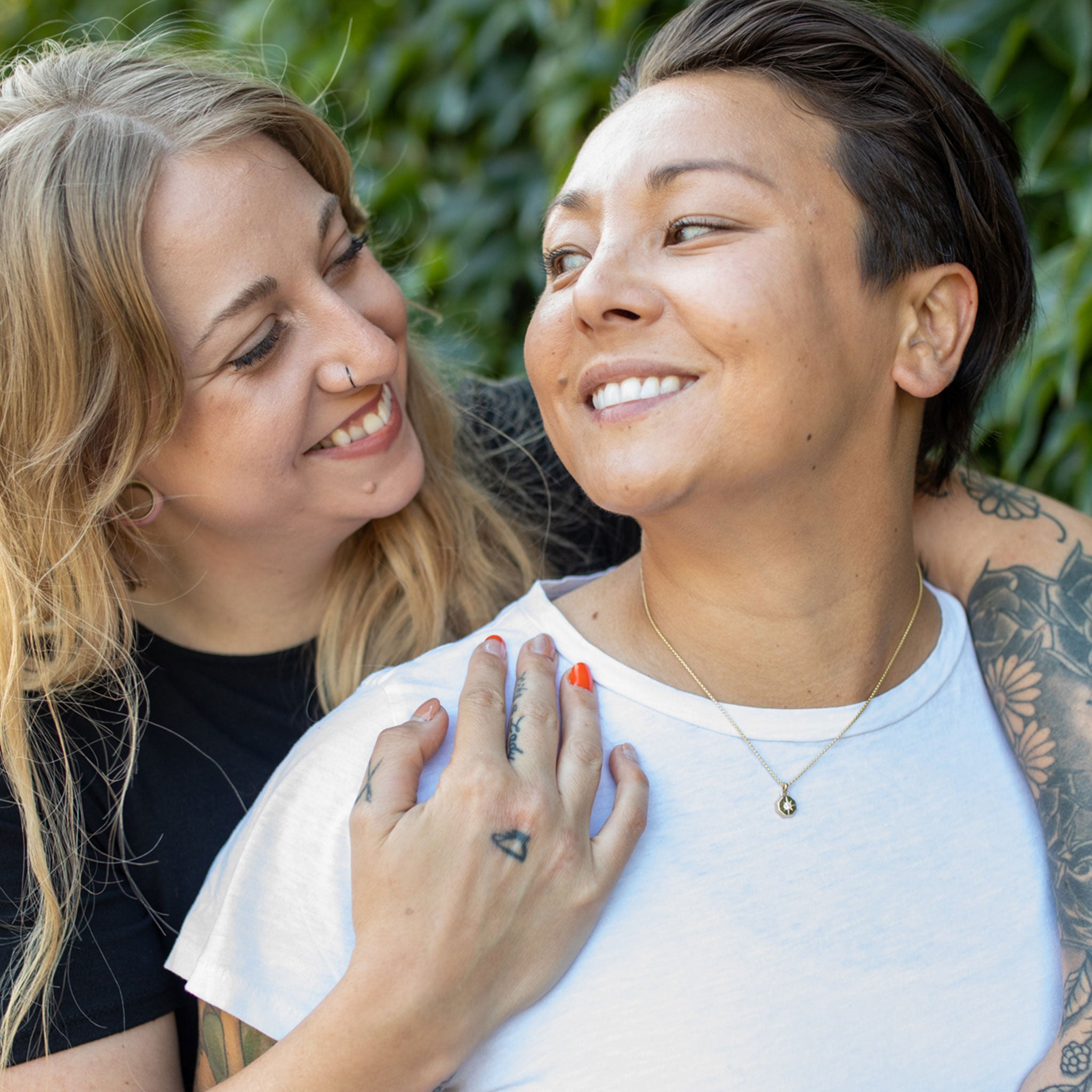Fit & Feel Library FAQ's from our Fantastic Customers, Part 1
One of the great features of our brick-and-mortar store is the Fit & Feel Library (F&FL). The F&FL displays brass prototypes of many of the Aide-mémoire rings you see on our website. For engagement and wedding customers embarking on their ring-shopping journey, the F&FL is the perfect, no-pressure place to try on rings, get measured for size, and ask questions.
In honor of all the fantastic folks who have visited us and our F&FL, we are dedicating several special blog posts to you! Aran's answered some of your most popular questions, aka FAQs. And, because there are so many great questions, we're dividing this into a few posts. So check back for more F&FL FAQ posts in the future.
You can also hop on over to our YouTube Channel, where Aran answers these questions by video.
Let the FAQ begin!
"I heard you are supposed to wear your engagement ring and wedding ring in a certain order and then reverse it after the wedding, is that true?"
AG: Yes and no. Traditionally speaking, yes. On your wedding day, the ceremonial wedding ring is placed on top of your engagement ring. According to tradition, after your wedding, the placement is reversed so the wedding ring sits at the base and your engagement ring sits on top. It has to do with what the Egyptians believed to be the vena amoris, the vein of love connecting your ring finger to your heart. But I think this is a pretty silly tradition. You should go with what feels good to you, because at the end of the day, all the veins in your body circulate through to the heart! I think it looks more balanced to have the wedding ring on the top. And, if your engagement ring is a little loose, wearing your wedding ring on top can protect it from falling off.
Fore more on engagement and wedding ring traditions, check out our post, To Have But Not Necessarily To Uphold: Wedding and Engagement Ring Traditions. It goes into more detail about ring tradition.

"Is Platinum more durable than white gold?"
AG: They are very different metals with different properties; it's not an apples to apples comparison. Gold is a hard, rigid metal. In comparison to platinum, it will resist scratching, dinging, and changing shape a bit more. Gold usually contains nickel, which is a common metal allergen so that's good to be aware of.
Platinum has a fluid surface that doesn't wear away so much as displace over time. It can scratch and ding easily. Let's say you had your ring on your finger and ran it over a metal railing. As time goes on, the material on a gold ring will actually wear away, whereas a platinum ring will show more scratches, but won't necessarily thin out. The platinum material will simply displace as you abrade it against the metal railing.
Platinum is often considered a more secure option for stone settings because of it's ability to wear down less than gold. A prong-set ring made with white gold will thin over time and need to be re-tipped. Whereas a platinum prong-set ring will settle around your stone over time and secure it a bit more. You'll still need to re-tip your platinum prongs, but by comparison to white gold, there's less maintenance.
"Why is platinum more expensive?"
AG: Well, some of the expense has to do with supply and demand. Another factor is that platinum is much denser than gold. If you have two rings that are the exact same style and size, but one is made of gold and the other platinum, the platinum ring would weigh more. The jewelry industry standard is to pay for precious metals by weight, not volume. Therefore the platinum costs more.
Know too that 14k gold is made up of 14 parts pure gold, and 10 parts silver, copper, zinc, or other semi to non-precious metals. Platinum is made up of a whopping 95% pure platinum.
"What are the recommended dimensions of an everyday wear ring?"
AG: Over the last few years, delicate looking rings have been more in fashion. But rings, especially everyday wear rings, take a lot of wear and tear. You need to balance that delicate look with something that has enough substance that will hold up over time. Alternatively, if you fall in love with something really delicate, just know that it likely won't hold up for 30+ years and it will need to be replaced.
Personally, I recommend purchasing a ring that's at least 2mm wide x 1.5mm thick. The wider and thicker the metal, the longer it will hold up.

"How does finger shape effect the type of ring I choose?"
AG: Generally there are two main types of finger shapes. One where the knuckle is wider than the base of the finger, and another where the finger tapers from the base down to the fingertip. If you're knuckle size is larger than your base, I recommend getting a ring that is tight as it goes over the knuckle, but wears a little looser at the base of your finger. This reduces that floppy feeling when you wear ring. Wider rings are usually not ideal for larger knuckles because the tendency is for them to be super loose on your finger overall.
Folks with tapered finger shapes can usually wear a range of ring sizes and shapes. With a tapered finger shape, my experience is that the question of size becomes more of a personal preference rather than a best practice. Basically you want the ring to be tight enough so it's not flying off your finger, but loose enough so it's not pinching your skin. Tapered fingers also lend themselves to top heavy rings, rings with larger stones, and wider rings.
______________________
This is part one of an ongoing blog post series covering your frequently asked Fit & Feel Library questions. Have a question you'd like us to answer? Send us a line and we'll do our best to include it in an upcoming Fit & Feel FAQ.


